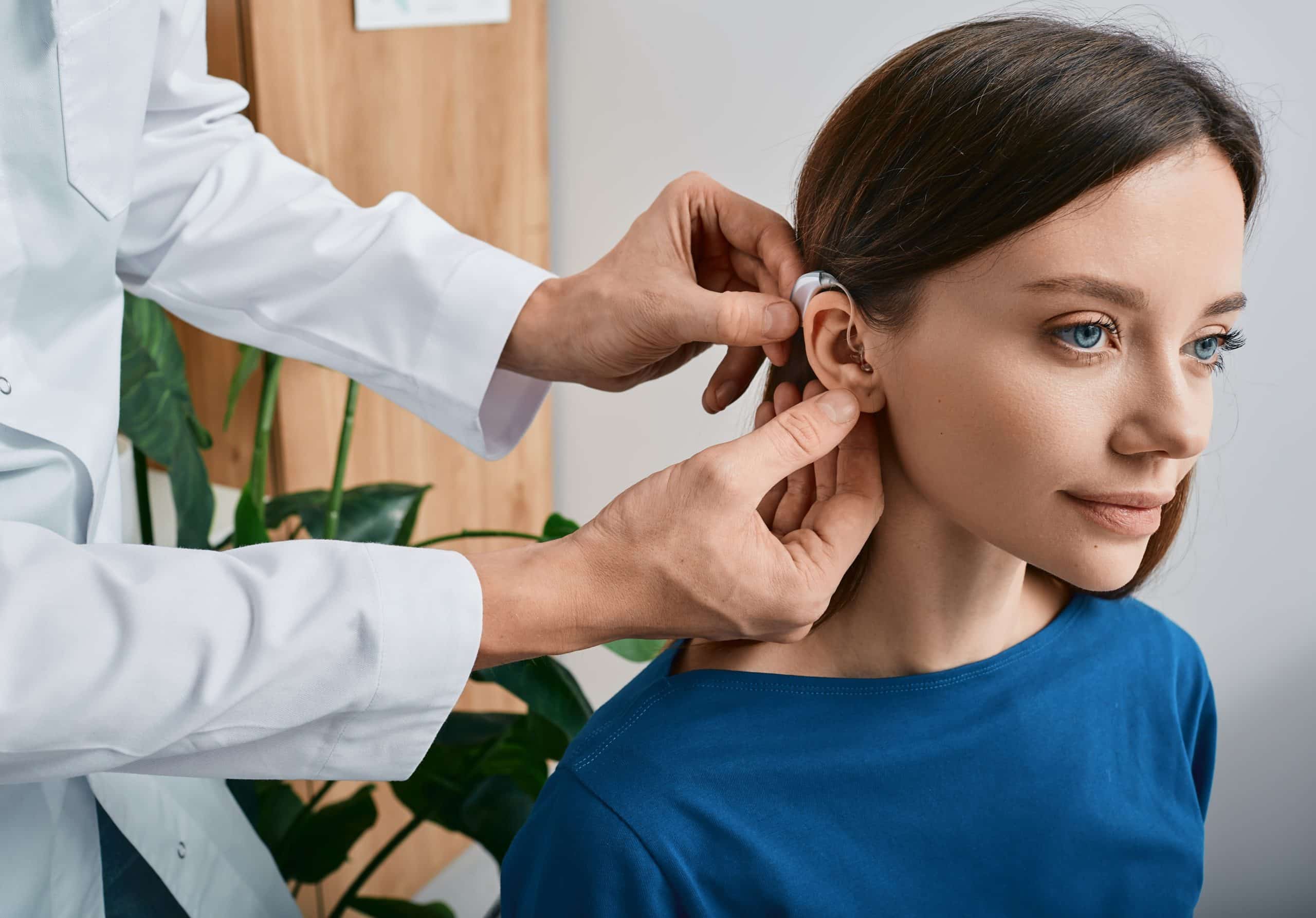Hearing Aid Types

When you’ve been diagnosed with hearing loss of nearly any degree or type, often a simple solution is getting fitted with a professional hearing aid that is adjusted and tuned by a hearing doctor. However, this leaves you with many options for what type, size, style, and even color you can choose for your specific hearing loss. While people with severe hearing loss may not have as many options, the numerous manufacturers and form factors that hearing aids have these days mean there’s likely an optimal choice for your unique circumstances. Here’s a quick review of hearing aid types.
In-The-Ear (ITE) Hearing Aids
The more discreet but usually less powerful hearing aid style is the ITE hearing aid. Within this category there are several types of hearing aids with their own features, benefits, and drawbacks that may or may not make them right for your lifestyle and degree of hearing loss.
Invisible in the Canal (IIC) or Completely in the Canal (CIC)
The smallest, nearly unnoticeable hearing aids are those that lie beneath or flush with the tragus, the flap or ridge overhanging the ear canal right above your earlobe. These small receivers can be clear or skin tone-colored to really blend in while providing some amplification and sound processing benefits.
Both receivers are placed as deeply in the ears as possible while still being removable. They provide a good seal for outside environmental sounds, which can help perfect the sound quality, but often lack the robust features that larger batteries, microchips, or physical controls provide. Their small size also might not be good for people who struggle with physical dexterity.
In the Canal (ITC) Hearing Aids
The largest of the still-discreet hearing aid styles are ITCs. ITCs fill the ear canal up to the point where they might touch the tragus. They are nearly as discreet and comfortable as IICs and CICs but might be more easily recognized depending on the specific model. However, they almost always have a longer battery life, more features that make it convenient to adjust settings – with physical buttons sometimes. However, they are still small and fiddly for some people and might be more susceptible to ear wax buildup or moisture damage.
Behind-The-Ear (BTE) Hearing Aids
If you need more powerful, sensitive, or technologically advanced sound processing, you’ll likely be looking into the BTE style of hearing aids. These have large batteries and the most versatile controls, these days often controlled via Bluetooth with a manufacturer’s app. While this isn’t the case in all models or appropriate for every person with hearing loss, it’s often helpful and makes the small controls or maintenance tasks more convenient.
Receiver in the Ear (RITE)
The RITE type of hearing aid might be the most popular hearing aid style for people with moderate to severe hearing loss. It’s also called a receiver-in-canal or RIC hearing aid, and consists of a tiny ear “dome” connected to a thin, translucent tube that attaches to the main sound processer behind the ear. The processor consists of the microphone array, battery, and computer chip that are by volume much larger than the in-the-ear style hearing aids. However, it’s still fairly discreet and comfortable, as the natural fold of the ear and the normally “open” style of ear bud that comes with it both conceal the device naturally and make wearing it barely noticeable.
RITEs can come with rechargeable batteries, saving cost over the long-term while making it less fiddly to replace tiny hearing aid batteries, and can be repaired by many hearing aid specialists, including our own at AOO.
Earmold Options
Behind-the-ear hearing aids can also be custom-fit to the shape of your ear, with the speaker part of the hearing aid sitting flush with the antihelix part of the ear, providing a greater seal from external noise but often requiring larger batteries and therefore larger sound processors that sit behind the ear.
The benefits of this style is that it is appropriate for mild to profound hearing loss and can be highly effective in children whose hearing ability might change frequently. Earmold BTEs can be changed as often as needed whether physically or audiologically to ensure the best performance.
Hearing Aids in Lone Tree, Denver, and Castle Rock, CO
If you or a loved one is suffering from the lifestyle or other effects of hearing loss, there’s no better time to schedule a consultation with a hearing specialist like the audiologists at the Hearing Institute at ENT Specialists of the Rockies. We work with board-certified ENTs to ensure your whole hearing health issues are addressed, whether or not a hearing aid is right for you. To learn more about your options for hearing solutions, don’t hesitate to call our office or contact us online today.
Associates of Otolaryngology, or, AOO | ENT Specialists of the Rockies has been serving multiple generations of families across the Denver Metro area since 1969. Our group of board-certified surgeons has been providing award-winning treatment and exceeding patients’ expectations with our specialized ENT services for over fifty-five years.
Thanks to our exceptional providers, we are an all-encompassing, comprehensive ENT practice. Our expert team of specialists includes general ENT surgeons, head and neck surgeons, sleep, sinus, and allergy specialists, and facial cosmetic and reconstructive surgeons. In addition, our team of providers is supported by doctoral-level audiologists, physician assistants, and nurse practitioners.





